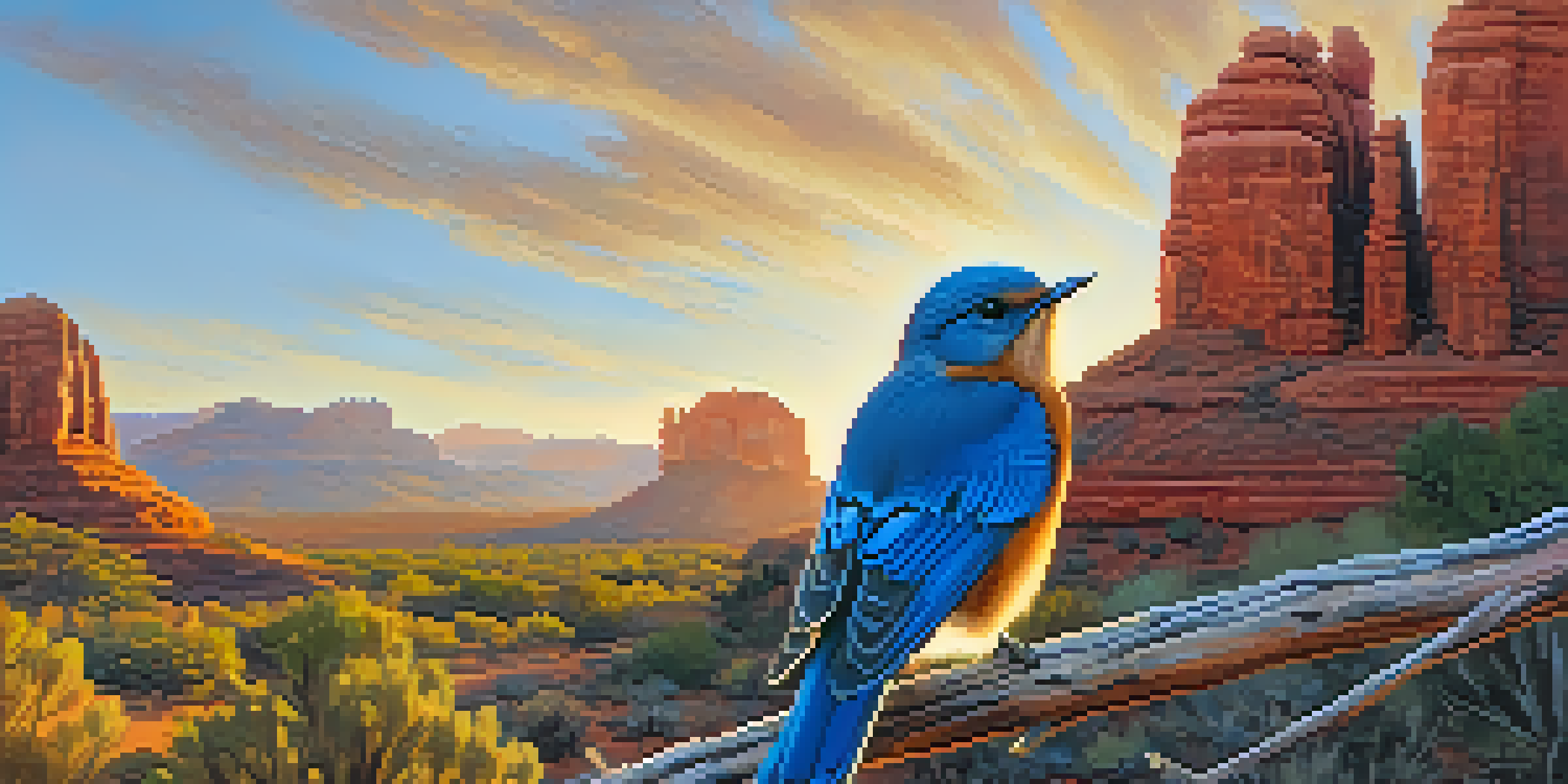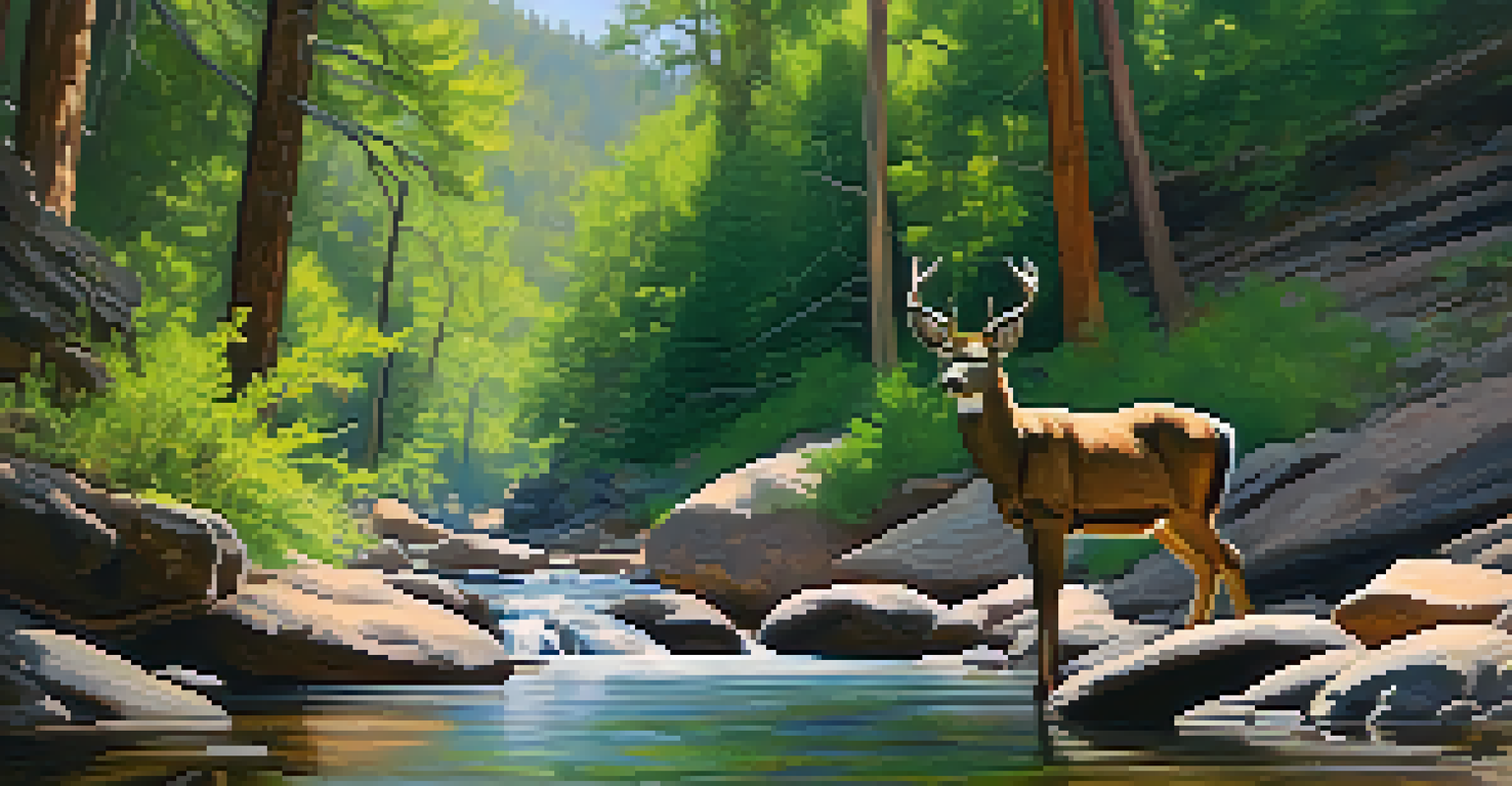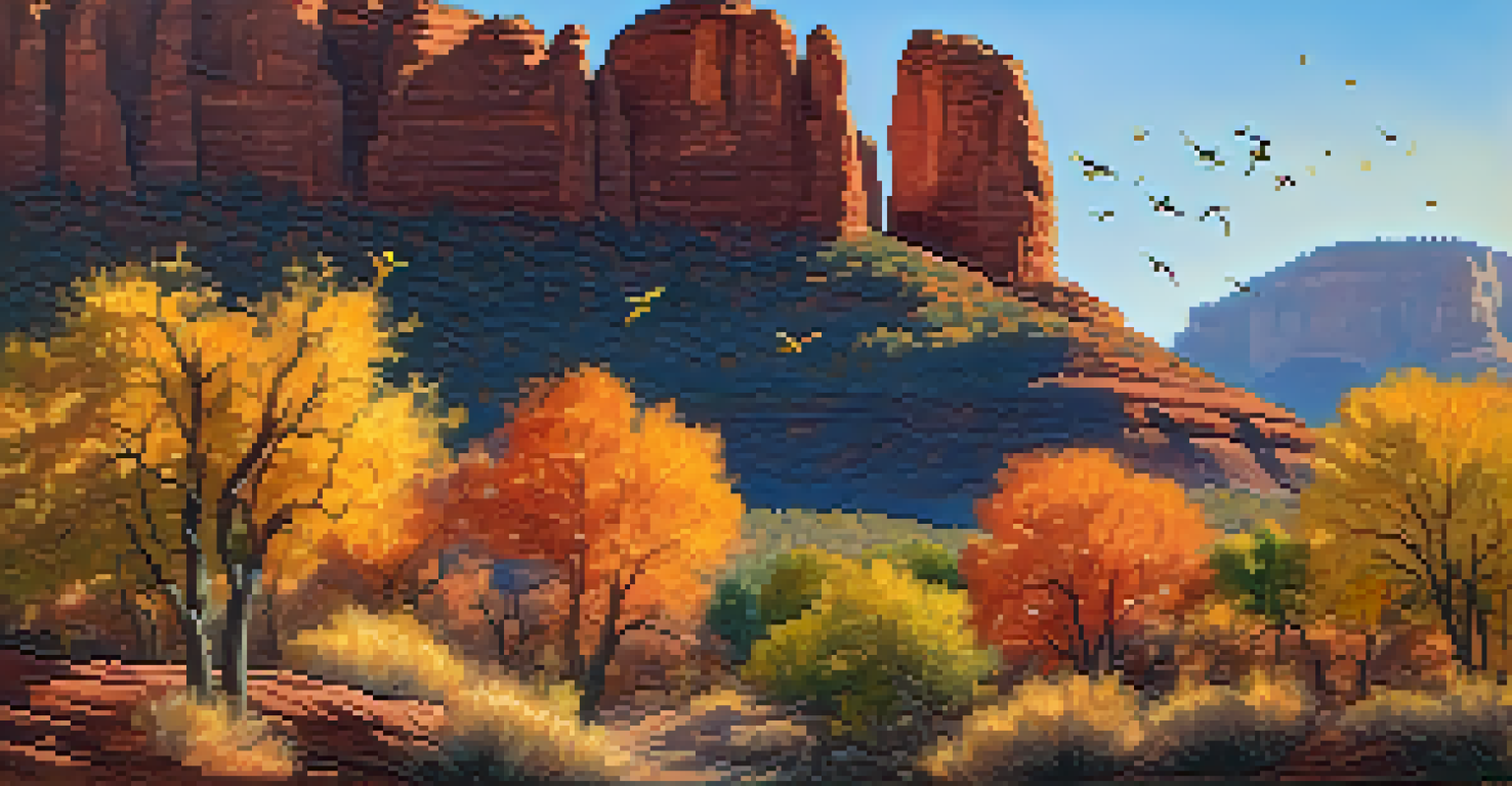Wildlife Photography Tips in Sedona's Scenic Areas

Understanding Sedona's Unique Wildlife Landscape
Sedona's stunning red rock formations and diverse ecosystems create a unique backdrop for wildlife photography. The varied habitats from lush forests to arid deserts support a wide range of species, making it a paradise for photographers. Understanding this environment is crucial for capturing the best shots, as different animals thrive in different areas.
In every walk with nature one receives far more than he seeks.
For instance, you might find deer and coyotes in the cooler, shaded areas, while vibrant birds like the Western Bluebird are often spotted near water sources. Knowing when and where to look will significantly enhance your chances of encountering wildlife. Take some time to explore these contrasts, as they not only enrich your experience but also offer diverse photographic opportunities.
Related Resource
In Sedona, every turn offers a new scene. So, whether you're hiking in the Oak Creek Canyon or wandering near the Red Rock State Park, keep your camera ready to capture the rich tapestry of life that thrives in this picturesque setting.
Timing: The Best Times for Wildlife Photography
Timing is everything in wildlife photography, especially in Sedona. Early mornings and late afternoons are often the best times to spot animals, as they are more active during these cooler parts of the day. The soft, golden light during these hours also helps create stunning images, enhancing the natural beauty of the landscape.

Additionally, consider the seasonal changes in Sedona. Spring brings blooming flowers and active wildlife, while fall showcases vibrant foliage and migratory birds. By aligning your photography sessions with these natural rhythms, you can capture the essence of Sedona throughout the year.
Explore Sedona's Wildlife Diversity
Sedona's varied ecosystems provide a rich habitat for diverse wildlife, making it an ideal location for photographers.
Remember, patience is key. Sometimes, waiting quietly in one spot can yield unexpected encounters with wildlife, so don’t rush; enjoy the moment and let nature come to you.
Choosing the Right Gear for Wildlife Photography
Having the right photography gear can make a world of difference when capturing wildlife in Sedona. A good DSLR or mirrorless camera with a telephoto lens will allow you to photograph animals from a distance without disturbing them. Look for lenses with a focal length of at least 200mm for the best results.
Photography is the story I fail to put into words.
In addition to your camera and lens, consider bringing a sturdy tripod or monopod for stability, especially in low-light conditions. A camera strap can also help you keep your gear secure while you navigate the varied terrain of Sedona's scenic areas.
Related Resource
Lastly, don’t forget about accessories like extra batteries and memory cards. Wildlife photography often involves long waits, and you'll want to be prepared to capture that perfect moment when it arrives.
Mastering Composition for Striking Wildlife Shots
Composition is a crucial element of wildlife photography that can elevate your images from ordinary to extraordinary. The rule of thirds is a great starting point; imagine dividing your frame into a grid and placing your subject along those lines or at their intersections. This technique creates a more dynamic and engaging photo.
Additionally, pay attention to the background. A cluttered or distracting backdrop can take away from your subject, so try to position yourself to isolate the animal in its environment. Using natural frames like branches or rocks can also enhance your composition.
Timing is Key for Great Shots
Capturing wildlife in Sedona is best during early mornings and late afternoons when animals are most active and the light is favorable.
Finally, don't shy away from experimenting with different angles. Shooting from a low perspective can give your photos a unique look and provide a fresh take on familiar scenes.
Staying Safe and Respecting Wildlife
While the thrill of capturing wildlife is exhilarating, safety should always come first. Always maintain a safe distance from animals to avoid stressing them. Sedona is home to various species, some of which may be unpredictable when approached. Use your zoom lens to capture close-up shots without intruding on their space.
Moreover, be aware of your surroundings and potential hazards like steep cliffs or loose rocks. Proper footwear and hydration are essential, especially when trekking through Sedona's rugged terrain.
Related Resource
Lastly, practice ethical wildlife photography by respecting the natural environment. Stay on designated trails, avoid feeding animals, and leave no trace behind. This ensures that Sedona remains a beautiful habitat for future generations of both wildlife and photographers alike.
Using Natural Light to Enhance Your Photos
Natural light is one of the most powerful tools in a photographer's arsenal, especially in a place as breathtaking as Sedona. The soft, warm light during sunrise and sunset can create stunning contrasts and highlight the rich colors of the landscape and wildlife. Learning to work with the light will significantly improve your photography.
Be mindful of how the light changes throughout the day. Midday sun can create harsh shadows, which may not be flattering for wildlife shots. If you find yourself shooting during this time, look for shaded areas or wait for the golden hour to capture more vibrant and flattering images.
Safety and Ethics in Photography
Maintaining a safe distance from wildlife and respecting their environment is crucial for ethical wildlife photography in Sedona.
Experiment with backlighting and silhouettes as well. Shooting into the sun can create dramatic effects, especially when capturing animals in motion or framed against a stunning Sedona sunset.
Post-Processing Techniques for Stunning Images
Once you've captured your wildlife images, the post-processing stage is where you can bring your vision to life. Programs like Adobe Lightroom or Photoshop allow you to enhance colors, adjust exposure, and crop your images for better composition. This step can help your photos reflect the beauty you experienced in Sedona.
Don't be afraid to experiment with different editing styles; you might find that a more vibrant look suits the colorful landscapes of Sedona, while a more muted palette might fit a serene wildlife shot. The key is to retain the natural essence of your photos while enhancing their appeal.

Also, consider sharing your work on social media or photography forums to receive feedback and connect with fellow wildlife enthusiasts. This not only helps you improve but also inspires others to explore and appreciate the beauty of Sedona.